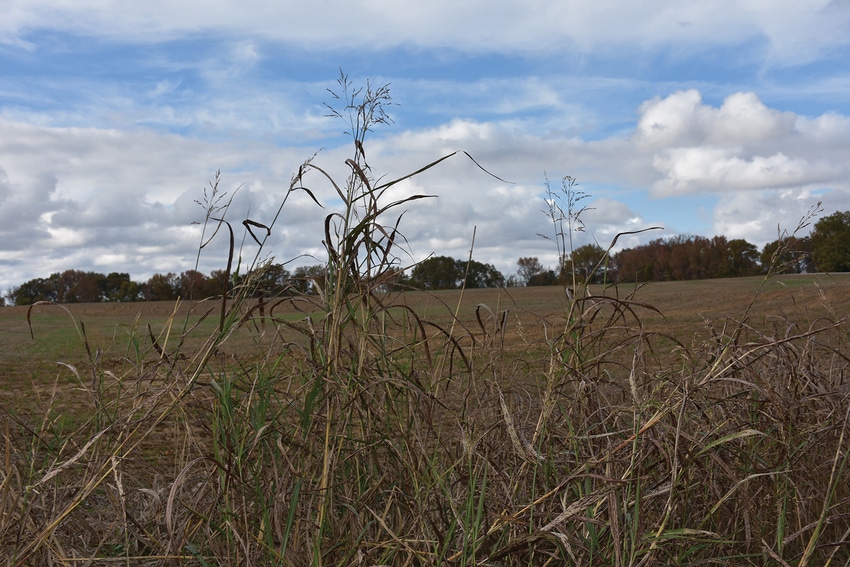
As fall temperatures drop and frosty mornings become more frequent, herders and ranchers need to be especially aware of grasses and trees that produce prussic acid when stressed, according to the University of Arkansas Division of Agriculture.
Johnsongrass is a good quality forage that produces the toxin when stressed due to freezing or in drought conditions. It is found throughout the Mid-South.
“When johnsongrass becomes stressed, it can produce prussic acid, also known as hydrocyanic acid, which is very toxic to livestock,” said John Jennings, extension forage specialist for the Division of Agriculture. “Prussic acid toxicity can kill cattle quickly, often before a producer has a chance to observe that the animal is under stress.”
The stress of increasing frosts and freezes also affect other large grasses such as sorghum, sudangrass, Green Graze (a family of hybrid varieties), grain sorghum and forage sorghum, according to Jennings.
“These forages should not be grazed following a hard frost until the plants become completely dried out and brown paper colored,” Jennings said. “Do not graze at night when frost is likely. To reduce risk even further, don’t turn hungry cattle directly out on johnsongrass pasture. Make sure they have grazed other forages first or fill them up on hay."
If properly dried, the grasses do not contain prussic acid and can be fed to cattle.
Be aware of risk
Powhatan, Ark., producer Mitch Baltz manages his grazing acres in a way that lessens the chance for exposure to prussic acid in grass.
"I work on a rotational grazing program," Baltz said. "I run the program on about 40 paddocks."
He grazes his stock for roughly 300 days in pasture and then switches them to hay as his calves are weened and the weather turns cold. He keeps a wary eye out for potentially dangerous stress events and can easily rotate his herd off of areas with high johnsongrass content.
"Sometimes we have just had to wait if it was pretty droughty or if we had some pretty cold weather and had a killing frost," he said. Once the wilt is over and the leaves have dried, the cattle can be rotated back into the pasture.
Baltz says that he can tell when johnsongrass gets risky by the way it twists in a drought, but by that time he has either rotated his herd out of that paddock or is feeding them hay.
Wild cherries can also be a source of the toxin, so be careful of broken branches or tree trimmings. The wilted leaves can be a danger to cattle.
If green or wilted johnsongrass is ensiled after a freeze or in drought, it needs to be allowed to ferment for at least six weeks. The toxin will gas off as the silage is moved and fed, according to Jennings.
The same is true if it is baled. If it dries out and is allowed to gas off, the grass should be fine to feed.
The amount of prussic acid in a plant is hard to determine as a reliable test is not available. The toxin can be detected in a postmortem test of an animal's blood, but a determination of how much is toxic to an animal has not been reliably established. Therefore, it is best to be aware of frosty conditions and where in your pasture potential prussic acid sources grow.
About the Author(s)
You May Also Like






